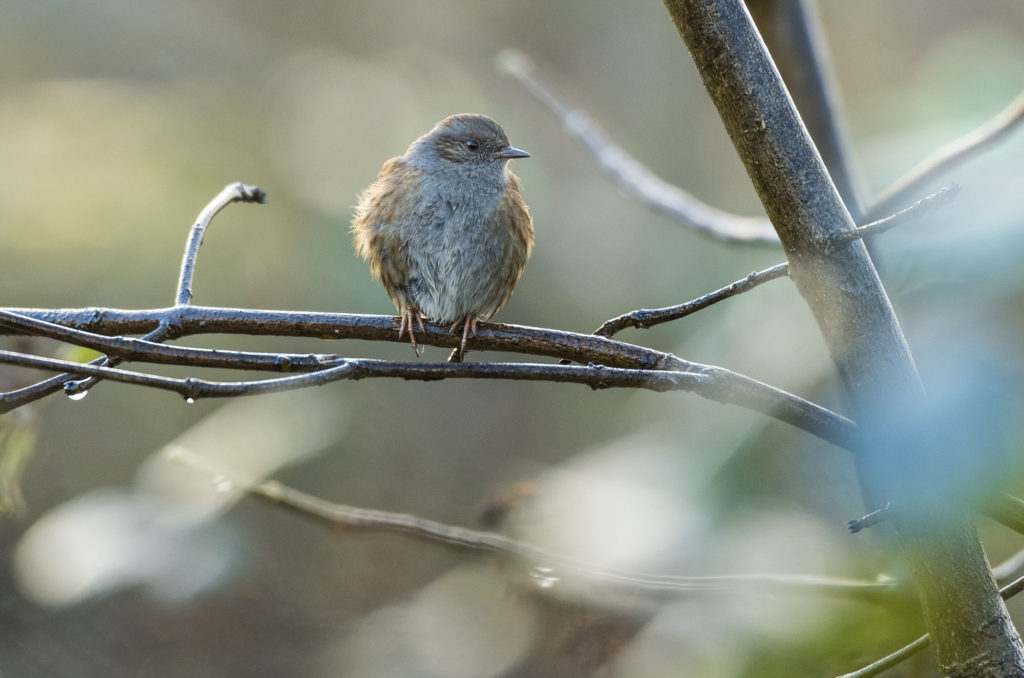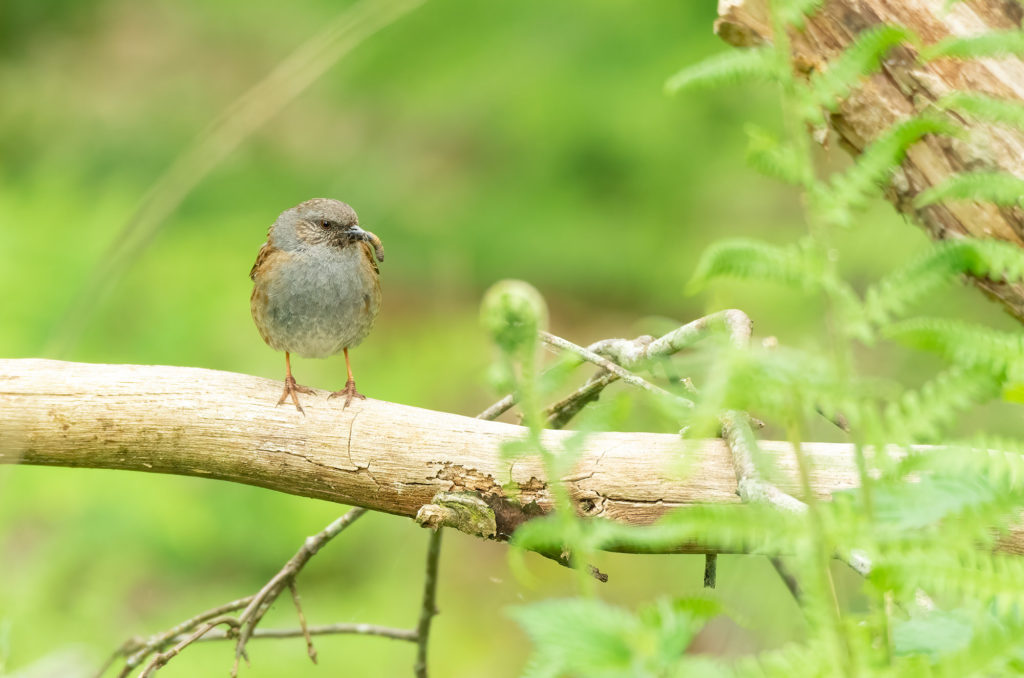It was as though he knew. Somehow he could see through my zipped-up fleece to the t-shirt underneath that had #TeamDunnock emblazoned across it. A dunnock – spotted on one of my daily walks – had bounced under the trees and bushes and allowed me to follow just a couple of metres behind.
The drab
There was obviously another reason for his confiding nature, but I like to think he knew that – while others may think him quite drab – I thought he was a stunning little bird. When you look closely at a dunnock’s grey and brown plumage, it is quite striking, particularly around their eyes. They also have a pretty but hurried warbling song, like a hyperactive child begging their parents for ice cream, and will often sing from a low perch.
Dunnocks are a notoriously shy species often found in farmland hedgerows, scrubland and on the edges of woodland, and in our gardens. Known as the hedge sparrow, they are actually part of the accentor family of birds. Their secretive nature and lack of brightly coloured plumage can mean this species goes unnoticed. But take a closer look into the shadows, and you will discover a unique bird with some surprising – and shocking – behaviours.
The deviant
The dunnock in the image at the top of this page was a lucky sighting on a walk in May. My partner first spotted this bird flitting about in the shadows of the trees. It was only when it landed on this branch that we realised it was carrying food to its nest. I captured a few images of it perched before we left it well alone. When I turned back to check on it, it was heading into the nearby bushes.
Dunnocks build nests of twigs and moss in dense vegetation. They usually lay four to five eggs that hatch after about two weeks. The chicks will fledge around two weeks later. So far, so standard. But the behaviour before the nest building starts makes this species an interesting one to study.
To say that the dunnock social system is complex would be an understatement. While some dunnocks adopt the monogamous approach with their mate, it is common for a female dunnock to have a relationship with two males. A male can also form bonds with two or more females, and there are even cases of groups of males doing this with groups of females. We think that these complicated relationships occur because both sexes of dunnock maintain their territories throughout the breeding season. Some of the male territories, which are larger, are occupied by two males – an alpha and a beta. These guys will both have access to the females in theory but the alpha will often dominate the beta and be more protective of his female when she is ready to lay eggs. So far, so bizarre. But it doesn’t stop there.

For a shy and retiring bird, the dunnock also has a pretty eye-watering pre-copulation routine. Parental guidance is recommended here. Before mating, the female dunnock will do a little dance in front of the male, presenting her vent (or cloaca). Then he will peck at this to stimulate her to eject any sperm from previous mating attempts with other males. With this behaviour, he can increase his chances of being the father of any chicks from that female.
The dupe
Still with me? Ok, but the dunnock isn’t the only deviant in the hedgerow. Frustratingly for the dunnock, the chicks that fledge may not always be their own. They could be that of another deviant species – everyone’s favourite parasite, the cuckoo. Female cuckoos usually specialise in one species to parasitise that lays similar-looking eggs, such as the meadow pipit. However, cuckoo eggs look very different to blue dunnock eggs, so how do they get away with kicking out the dunnock eggs in favour of one of their own? Well, it turns out that the dunnocks don’t seem to spot the cuckoo egg in their nest. This is perhaps due to dunnocks not being the most common host for cuckoos, so they have not yet evolved to spot the danger. Either way, dunnock parents who fall victim to parasitism put a huge amount of effort and energy into raising one giant cuckoo baby.

I have only scratched the surface of the complex social system and behaviours of this fascinating species. So, the next time you walk on by as a dunnock hops into the hedgerow ahead of you, remember that this seemingly unassuming bird is quite a character.

